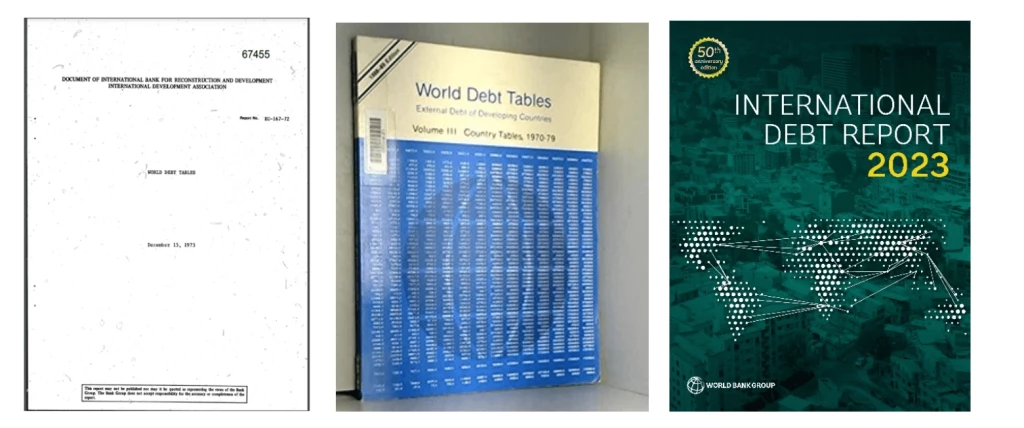
Over the past half century, the world has witnessed significant changes, including a remarkable decline in global extreme poverty and global inequality. The World Bank Group has played a crucial role in this progress through its loans, grants, and guarantees to promote economic growth and development.
One constant has remained amidst these changes: the annual publication of the International Debt Report by the World Bank. As we celebrate the 50th anniversary of this landmark publication, it is important to recognize the intricate link between debt transparency, sustainable debt management, and the improvements in global poverty over the past five decades.
The evolution of the International Debt Report
Since its inception in 1973, the International Debt Report has undergone numerous improvements and name changes. Initially known as The World Debt Tables, the report primarily consisted of data tables. Over the years, it transformed into Global Development Finance, International Debt Statistics, and finally, its current title in 2022. Alongside these changes, the report has expanded its scope, incorporating new types of data, such as debt buybacks and debt restructuring information. Today, the publication and its accompanying database provide comprehensive and granular information on external debt stocks and flows of low- and middle-income countries (LMICs).
Key features of the 50th anniversary edition
This year's 50th anniversary edition of the International Debt Report offers a wealth of information and analysis. It includes detailed debt data on all 122 World Bank borrowers, as well as aggregated data by region, income group, and other categories. Additionally, the report examines one-year changes and decade-long trends in debt stocks, debt flows, and new debt commitments. It also provides analytical indicators, such as the ratio of debt stock and debt service payments to gross national income and export income, which help assess the burden of debt for borrowing countries.
The International Debt Report goes beyond presenting data, offering valuable insights and analysis on the debt situation of LMICs. It discusses the challenges these countries face due to global monetary and fiscal tightening, changes in the composition of external debt, and rising debt vulnerabilities. Furthermore, the report provides a forward-looking analysis, utilizing the most recent data and trends to project how public and external debt burdens may evolve in the context of growth prospects for these countries in 2023 and beyond.
The World Bank has been a pioneer in recognizing the importance of debt transparency and accountable lending practices. The report highlights how changing World Bank policies on debt data reporting are catalyzing greater debt transparency, enabling more comprehensive and timely debt reporting. It also emphasizes the need for innovative approaches to debt management in LMICs and underscores the value that World Bank debt data can bring to this important process.
In addition to its existing features, this year's International Debt Report explores how the wealth of information in the Bank's debt database could be utilized to create an early warning system for debt distress in LMICs. Such a system would enable policymakers to take proactive measures to avoid or mitigate distress episodes and their consequences.
The importance of debt transparency and sustainability
Dissemination of comprehensive external debt data, accompanied by insightful analysis, is an invaluable resource for researchers, policymakers, and lenders ranging from the World Bank to governments and private institutions. Given the recent challenges posed by the COVID-19 pandemic, climate events, and a deteriorating global macroeconomic environment, debt stability and sustainability have become even more critical.
As we celebrate the 50th anniversary of the International Debt Report, it is evident that debt transparency and sustainable debt management have played a vital role in reducing global poverty. The report's evolution, comprehensive data, insightful analysis, and forward-looking approach make it an indispensable tool for addressing the challenges faced by LMICs. Achieving the World Bank's mission of ending extreme poverty on a livable planet requires a continued focus on debt transparency and sustainability among low- and middle-income countries.
Visit the World Bank’s Debt Statistics website for more information.




Join the Conversation